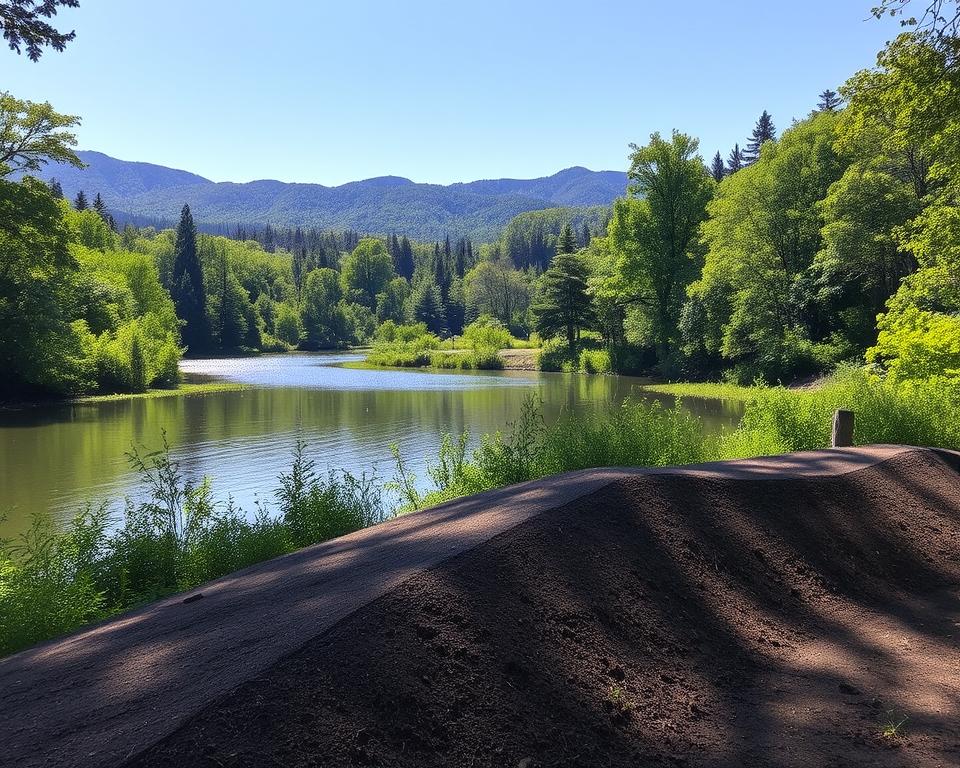Learn Why Shrub Clearing for Land Enhancement Counts
Overgrown vegetation not only hide garden gnomes. Left unchecked, it poses fire hazards, reduces usable space, and diminishes your home’s market appeal. Studies from the Bureau of Land Management show 67% of wildfire risks are caused by unmanaged ground cover near residential areas.
Maintaining your land isn’t just about aesthetics. Tactical removal of dense shrubs creates sightlines, forms walkable paths, and reveals hidden features like mature trees or stone walls. Realtors report properties with tidy outdoor spaces sell 11% faster than those with chaotic greenery, hence land clearing near me.
Beyond safety and sales potential, intentional landscape management reduces long-term costs. Simplified maintenance means fewer hours spent tackling invasive plants or repairing erosion damage. It also lets you redesign spaces for outdoor living – think fire pits instead of thorny thickets.
This guide outlines usable methods to transform tangled lots into functional assets. You’ll discover how seasonal trimming routines protect ecosystems while enhancing curb appeal. Ready to unlock your land’s hidden potential?
Key Benefits of Underbrush Clearing
Dense undergrowth creates more problems than most homeowners know. Proper management transforms chaotic landscapes into functional spaces while tackling critical safety concerns. Strategic brush removal delivers three immediate advantages for any property.
Improved Property Access and Safety
Clearing overgrown vegetation uncovers hidden pathways and removes tripping hazards. Regular removal of dense shrubs keeps walkways navigable year-round while minimizing habitats for pests like ticks and rodents. Fire departments report 40% fewer outdoor accidents on properties with maintained perimeters.
Enhanced Curb Appeal and Increased Property Value
Tidy landscapes make strong first impressions. Realtors note homes with managed trees and open sightlines sell faster. Removing obstructive shrubs highlights architectural features and mature vegetation, possibly boosting value by up to 12% according to appraisal experts.
Reduced Wildfire Risks and Improved Land Usability
Dry brush acts as fuel during fire season. Creating defensible space through vegetation management slows flame spread. This practice also converts choked areas into functional spaces for gardens or play zones. “A 30-foot clearance around structures cuts fire risks by half,” confirms wildfire prevention guidelines.

Why Clear Underbrush for Property Improvement: Top Reasons
Neglected greenery presents hidden threats to site value. Strategic removal of tangled plants tackles both visible and invisible challenges, transforming chaotic spaces into thriving ecosystems. Research shows consistent maintenance cuts long-term costs while supporting sustainable practices.
Boosting Aesthetic Appeal and Landscape Health
Choked shrubs stifle native plants and cause visual clutter. Removing them lets sunlight reach the soil, promoting diverse ground cover. This process stabilizes earth layers, cutting erosion by up to 45% according to agricultural studies.
Well-maintained areas foster biodiversity. Birds and pollinators return when invasive species get removed. “Healthy landscapes need breathing room,” notes a USDA horticulturist. Regular trimming also reveals natural features like rock formations or mature trees.
Preventative Measures to Minimize Fire Risk
Dry brush acts as kindling during droughts. Creating firebreaks through targeted removal hinders flame spread. Forest Service data reveals properties with 50-foot buffers experience 60% fewer fire-related incidents.
Urban projects mirror wildfire prevention tactics. Homeowners who clear flammable materials around structures protect entire neighborhoods. This approach also deters rodents seeking dense hiding spots.
Smart land management balances safety and beauty. It turns risky zones into functional spaces – imagine vegetable gardens replacing fire-prone thickets. These changes improve usability while protecting investments.
Effective Methods for Underbrush Management
Managing dense vegetation requires smart approaches customized to your site’s needs. Choosing between hands-on work and expert help depends on your landscape’s size, budget, and long-term goals. Industry pros emphasize balancing immediate results with sustainable practices.
Manual Removal Versus Professional Services
Hand-clearing fits small areas but demands significant time and effort. Tools like loppers and weed wrenches function for isolated shrubs, though roots often regrow. “DIY methods risk damaging tree roots if done carelessly,” warns Oregon landscaper Mara Jenson.
Professional crews use specialized equipment to handle large-scale projects efficiently. Their services reduce physical strain and include debris disposal. Costs vary, but many homeowners save time and prevent plant damage through expert interventions.
Strategies to Prevent Regrowth and Maintain Land Health
Successful management combines removal with regrowth blockers:
- Apply targeted herbicides to invasive species
- Install root barriers around desired plants
- Spread mulch to suppress new growth
Seasonal timing matters. Spring treatments stop seed spread, while fall applications prepare soil for winter. Regular monitoring preserves landscaping investments and keeps spaces functional year-round.
Bringing It All Together
Regular vegetation management turns landscapes into safer, more inviting spaces. By maintaining cleared areas, homeowners reduce fire hazards while creating functional outdoor zones. Studies show this practice decreases wildfire risks by up to 60%, protecting both structures and natural surroundings.
Enhanced curb appeal directly impacts market desirability. Real estate experts note tidy landscapes can increase buyer interest by 30%, with well-maintained properties often selling faster. Strategic removal of overgrowth highlights architectural features and mature plants, maximizing visual impact.
Long-term value preservation requires consistent effort. Seasonal trimming and professional services prevent invasive regrowth, ensuring spaces remain usable year-round. These efforts not only support sustainable land practices but also maintain safer environments for families and communities.
Investing in ongoing care protects your landscape’s health and curb appeal. Whether through DIY methods or expert help, proactive management ensures your outdoor space remains a valuable asset. Start today to preserve your property’s potential and peace of mind.
